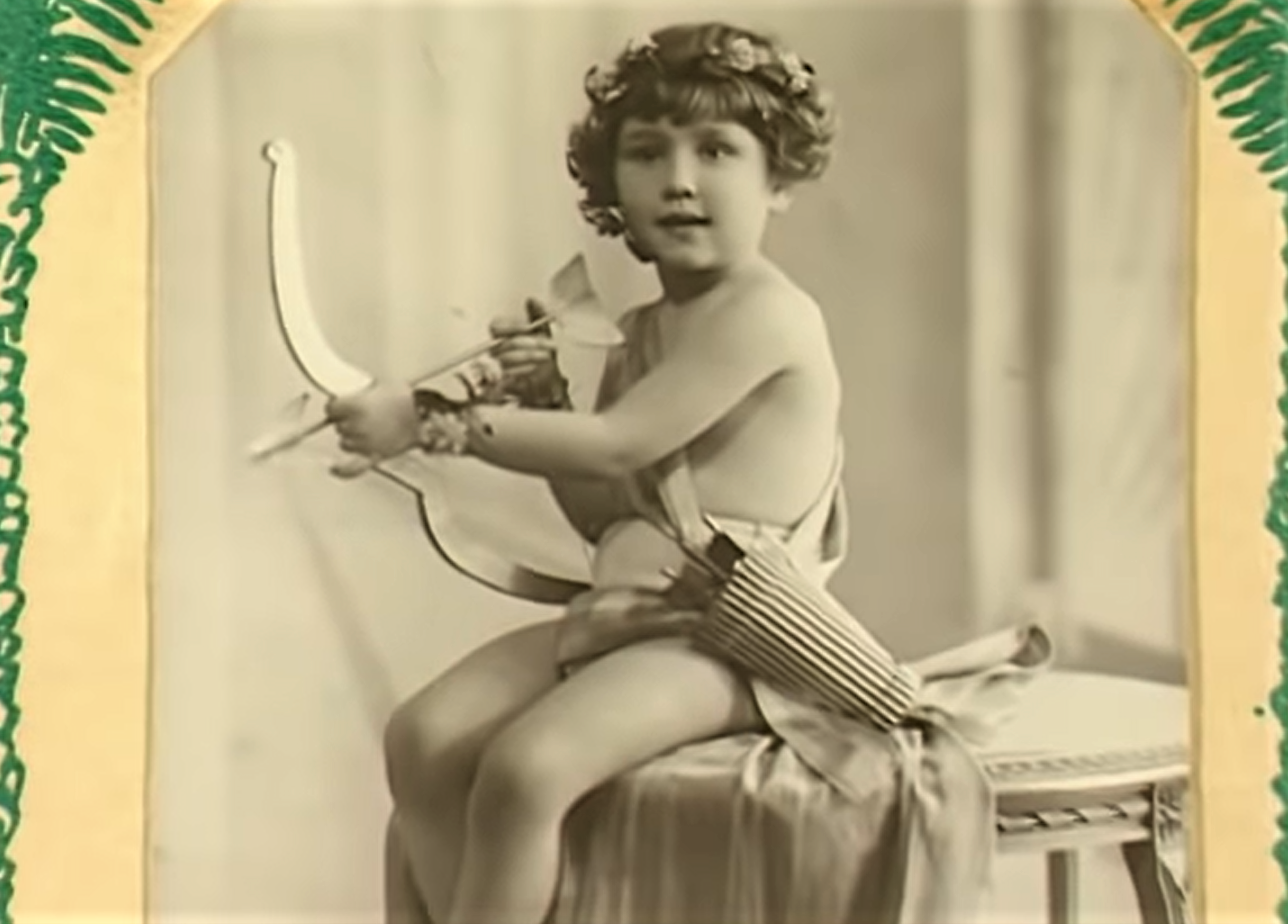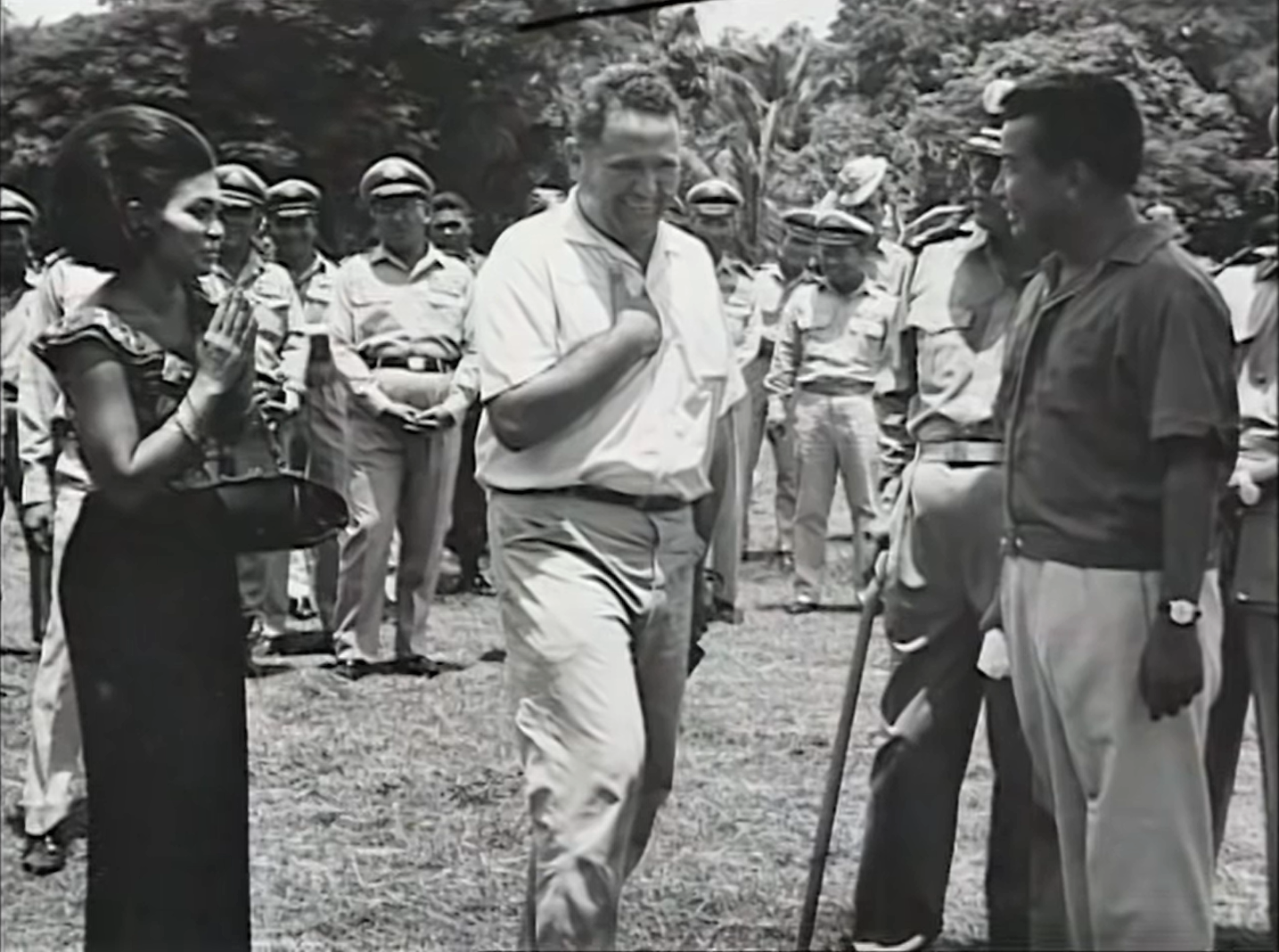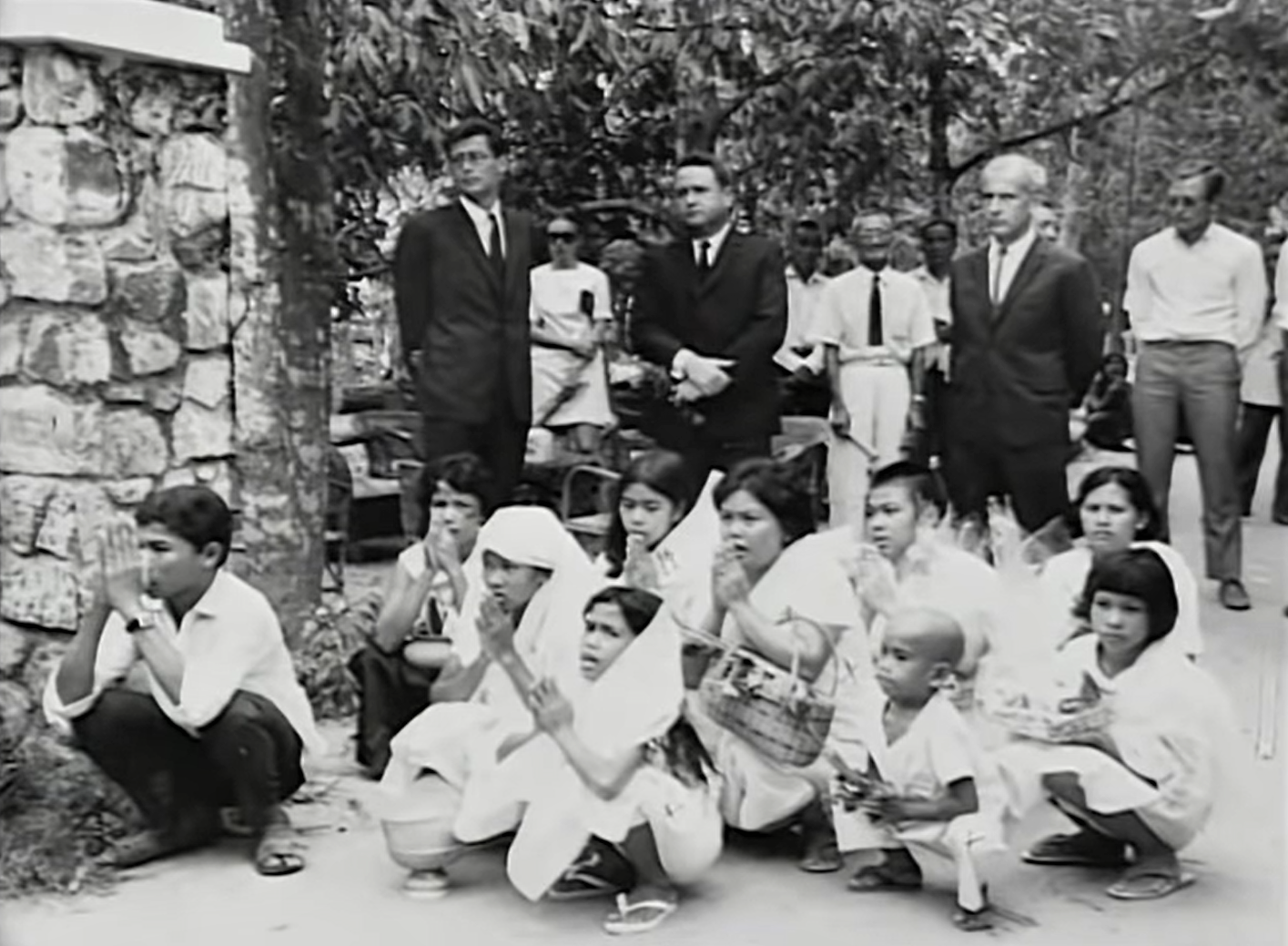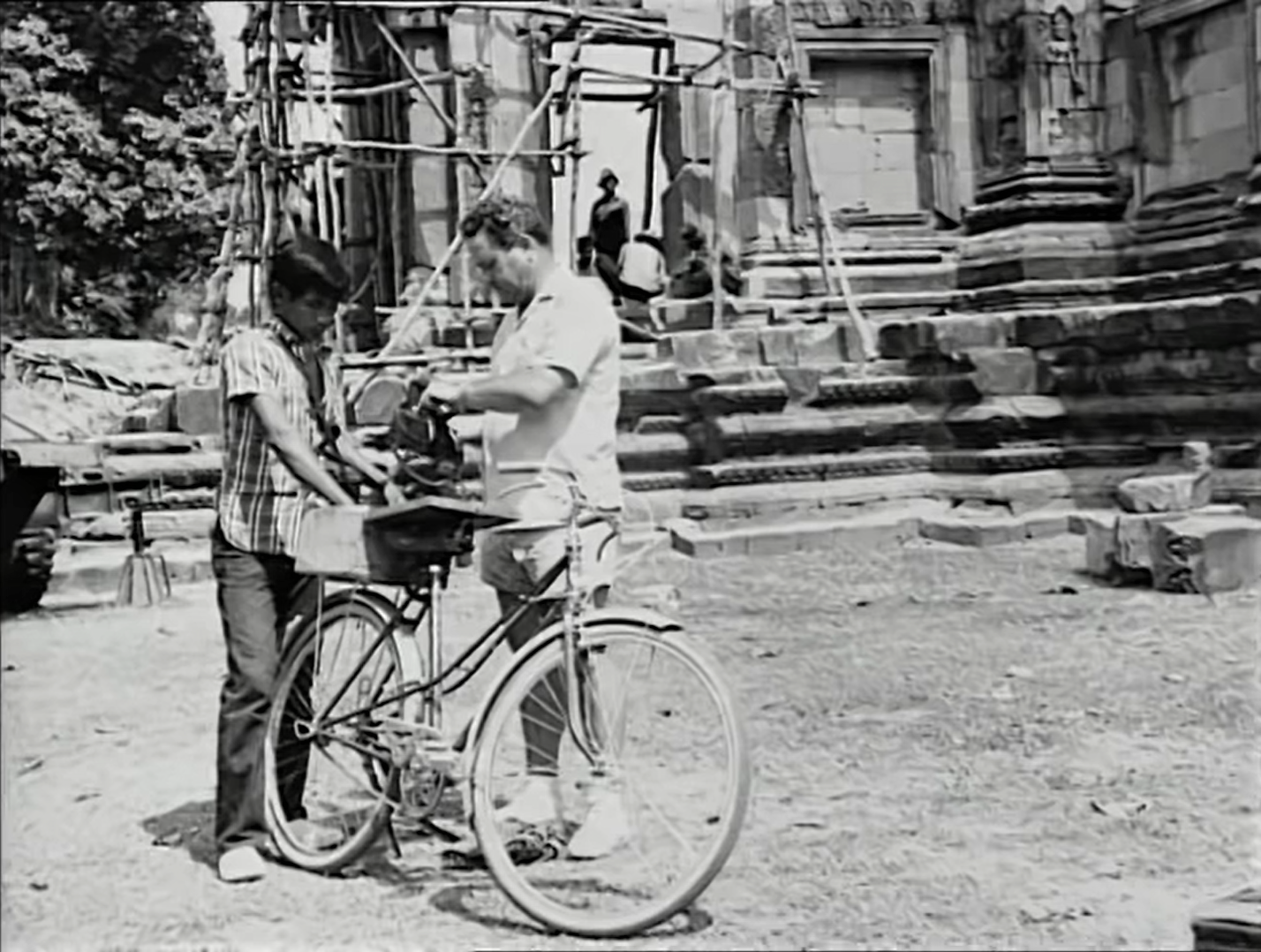Angkor and Cambodia in the Sixteenth Century, from Spanish and Portuguese Sources]
by Bernard Philippe Groslier & Charles Ralph Boxer & Michael Smithies
The first and only collection of Spanish and Portuguese written sources on Angkor, predating the Angkorian "rediscovery" by more than 300 years.
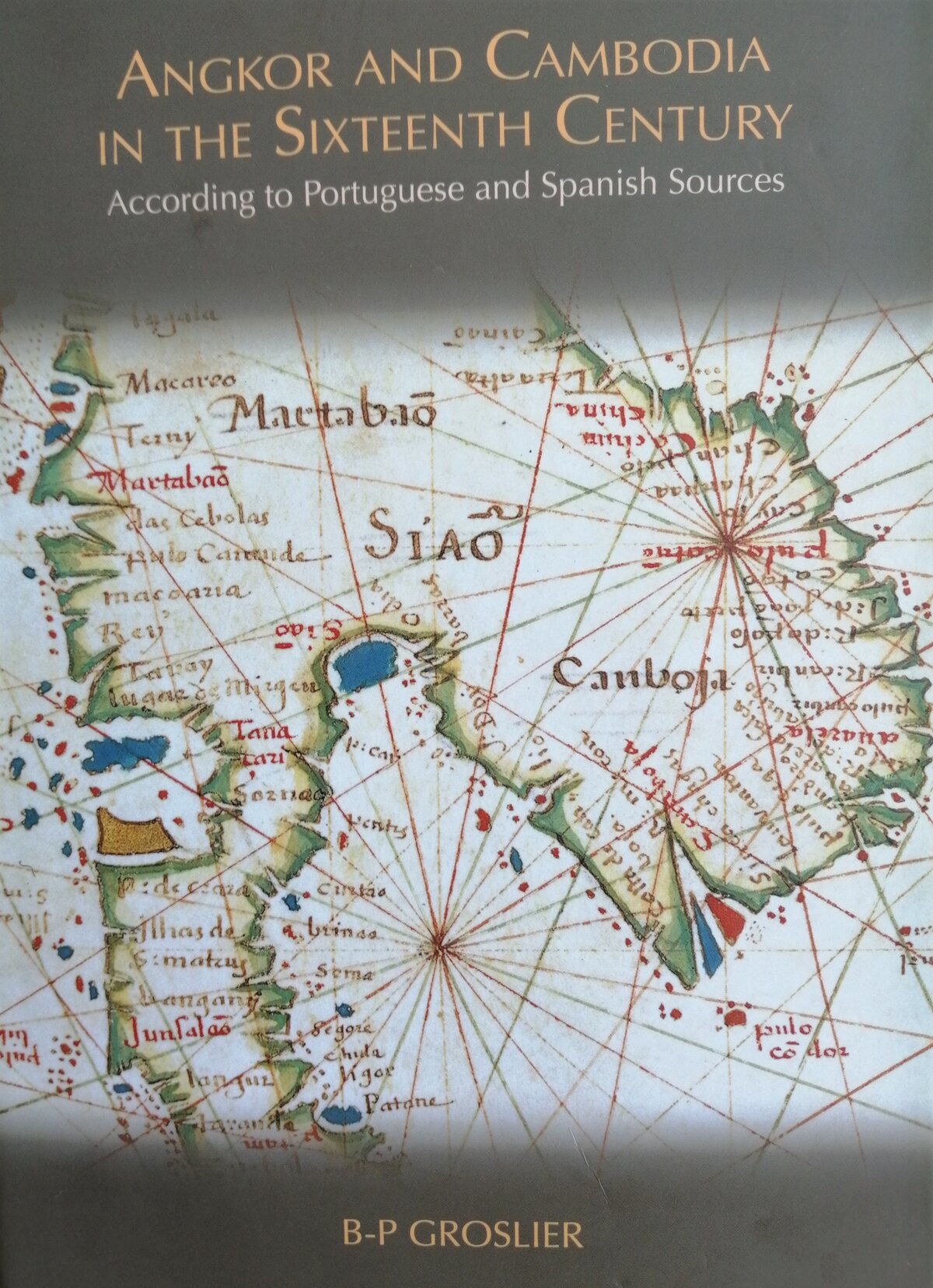
Type: hardback
Publisher: English translation of Angkor et le Cambodge au XVIeme siecle, d'apres les sources espagnoles et portugaises, Orchid Press
Published: 2010
Authors: Bernard Philippe Groslier, Charles Ralph Boxer & Michael Smithies
Pages: 186
ISBN: 9745240532
Languages : English, Portuguese, Spanish
ADB Library Catalog ID: GROSSPENG
Seminal compendium of major Spanish and Portuguese sources on Angkor, B.P. Groslier’s work (initially published in French in 1958) is also an important contribution on the “decline and fall” of the Angkorian Empire.
All the quoted explorers, missionaries or adventurers, concur to state that Angkor was rediscovered “by chance”, during a hunting party led by Khmer King Ang Chan in the mid 1500s. Showing the extent of plagiarism in all these testimonies, Groslier attempts a much more nuanced approach by studying the multiple factors that led to the abandonment of the Angkorian metropolis, including the military and cultural pressure by Siamese forces, the decay of the irrigation system, and the infightings between Jayavarman VII’s (legitimate or self-proclaimed) heirs.
Note: we have added C.R. Boxer as an author, which was B.P. Groslier’s wish but did not happen because of “Boxer’s modesty”, according to Groslier himself in his foreword.
Read the pdf version by Archaeological Survey of Cambodia (via Internet Archive)
AngkorDatabase input:
- Here is the integral text of Diogo do Couto’s Chapter 6 of Duedecima Decada da Asia, “Of the Great and Marvellous City Discovered in the Forests of the Kingdom of Camboja, its construction and its location”. This text is the recollection of the Franciscan friar António da Madalena’s visit to Cambodia in 1551 or 1552.
- Antoine Cabaton has given his own chronology of the Portuguese Dominican Mission in Cambodia: ‘C’est vers 1553 que le premier Missionnaire Dominicain dont le nom soit connu, le portugais Gaspar DA CRUZ, arriva au Cambodge de Malaca [Francis Garnier prétend pour sa part qu’en 1553 les Missionnaires portugais Luis CARDOSO et Juan MADEIRA furent les premiers Européens qui pénétrèrent au Cambodge].
Vinrent après lui frey LOPO CARDOSO et JOAO MADEIRA ; quelques mois plus tard frey SILVESTRO D’AZEVEDO qui, à la suite de la prise par les Chinois d’une cargaison envoyée de Malaca au roi du Cambodge PRAHUNCAR LANGARA( PONHATAN), sous la conduite du P. MADEIRA, fut réduit en esclavage, ainsi que les deux pères REYNALDO DE SANTA MARIA et GASPAR DO SALVADOR, qui arrivèrent peu après avec une nouvelle cargaison, que le roi s’appropria. Mais, pris de crainte, redoutant une vengeance des moines portugais, il se tourna vers le père SILVESTRO qui, très adroit, arrangea les choses à la grande satisfaction de PRAHUNCAR qui put jouir en paix de son butin. Le P. SILVESTRO passa au rang de Conseiller intime et mis au-dessus des grands mandarins. Il mourut au Cambodge vers 1585.
Vers 1570, arrivent ANTONIO DE DORTA, LUIS de FONSECA et JORGE DA MOTA. Le premier, qui devint vicaire général de l’Inde à Malaca, y fut chargé de la direction du Couvent de Saint-Dominique, à la fin du XVIe siècle. JORGE DA MOTA et Luis DE FONSECA, faits prisonnierspar les Siamois en 1594, sont emmenés au Siam. Le premier, blessé, meurt se rendant à Malaca ; le second est massacré alors qu’il disait sa messe.
En 1596 arrivent : le père provincial de l’Ordre de Saint-Dominique à Manille : Fray ALONSO JIMENES, le P. fray DIEGO ADUARTE avec le frère lai JUAN DEÇA, chirurgien, accompagnant la première expédition espagnole au Cambodge sous les ordres du général GALLINATO. En le courant de 1598, trois pères Dominicains dont le nom n’est point cité, quittent Manille avec l’expédition de secours commandée par Luis ORTIZ DEL CASTILLO, laquelle, du fait des imprudences et de l’arrogance des Espagnols, de leurs déprédations, fut massacrée par le chef de la Marine et ses Malais.
Fin 1598, partent de Manille, sur la frégate commandée par JUAN DE MENDOZA GAMBOA, les PP. fray JUAN MALDONADO, PEDRO LABASTIDAet JUAN DE SAN PEDRO MARTIR. Les deux derniers succombèrent dans le massacre que fit l’Okna LAKSAMANA (chef de la Marine) des Espagnols à Chordemuco (Phnom-Penh). Le père MALDONADO parvint avec peine à s’enfuir avec JUAN DE MENDOZA et quelques rares survivants, au Siam ; à Odia (Ayuddhia) où ils sont internés avec défense d’en partir. Craignant pour leur vie, ils prennent la fuite et sont poursuivis plusieurs jours par les Siamois, qui harcelaient ou blessaient la petite troupe. MALDONADO parvint à gagner la Cochinchine où il mourut des blessures reçues dans sa fuite. Avant d’expirer, il écrivit encore à son supérieur à Manille pour lui déconseiller toute nouvelle tentative sur le Cambodge. Ainsi finit le rôle des Dominicains au Cambodge, bien que, en 1628 et en 1629, le P. Fr. JUAN BAUTISTA DE MORALES, né à Ecija, essaya d’y fonder une église. N’y pouvant parvenir, il retourna à Manille et mourut à Foning-cheu (Fokien), le 17 septembre 1664.’ (in Dictionnaire de bio-bibliographie générale, ancienne et moderne de l’Indochine française / A. Brebion (publié après la mort de l’auteur par A. Cabaton, Paris, SEGMC, 1935, pp. 129 – 130)
Tags: decline and fall, Siam, King Satha, Portuguese explorers, early explorers, 16th century
About the Authors
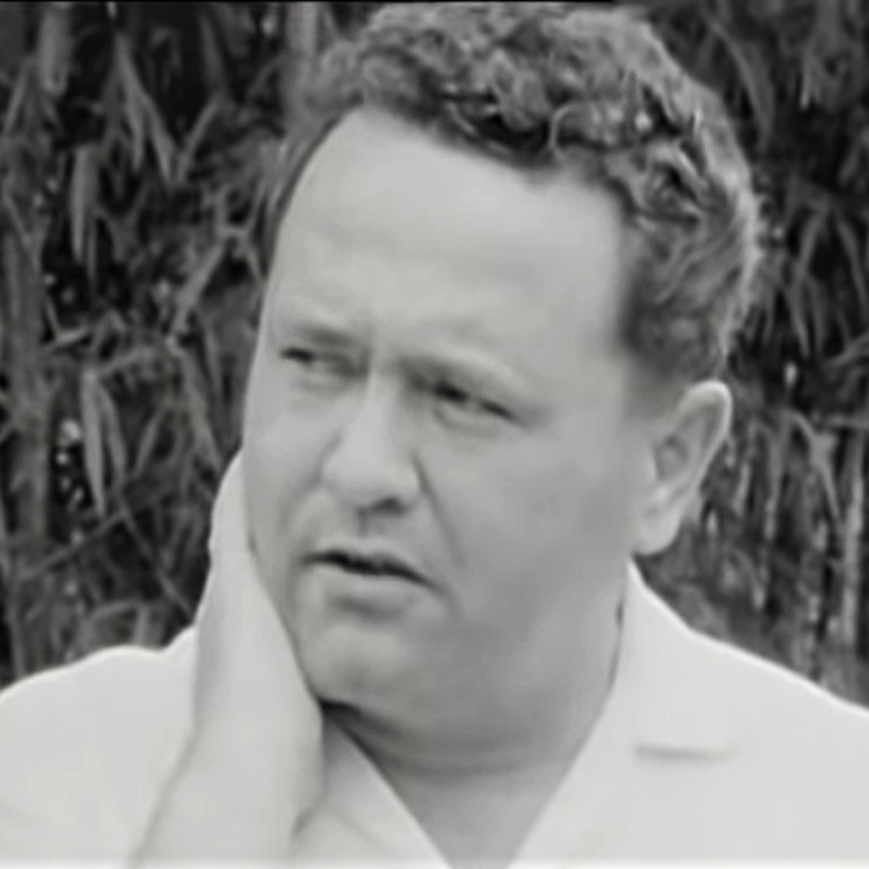
Bernard Philippe Groslier
Son of Cambodia National Museum’s founder George Groslier, Bernard Philippe Groslier (10 May 1926, Phnom Penh — 29 May 1986, Paris) was the last French Curator of Angkor Monuments from 1960 until 1975. Archeologist and explorer, he has led the excavations and mapping process at Angkor Thom.
His book Angkor, Hommes et Pierres (Paris, 1968) remains a major reference for Angkor researchers. He also contributed several monographies on Khmer inscriptions, sculptures and architectural vestiges. Bernard Philippe Groslier was also a pioneer in developing the approach of Angkor as “hydraulic city”, studying the irrigation and water management.
A childhood friend of H.M. King Norodom Sihanouk, Groslier developed the archaelogical work in the temples surrounding Angkor, obtaining funds from General de Gaulle, whom he guided through the Angkorean ruins during the French leader’s historic visit to Cambodia in 1967. He protected as much as possible the archaelogical sites, and the families of Cambodian workers at Angkor, during the 1970 – 1974 civil war. At that time, some 3,000 refugees lived in Angkor and other temples, while 200 took refuge at the Conservation d’Angkor. Groslier himself suffered a severe knife wound.
He strongly believed that the future of Angkor preservation and research was to become a mission of the Cambodian people. In a lecture given at Sorbonne University in 1984, he expressed what he had thought for a long time: “Il est clair que nous avons d’une certaine manière, non pas délibérement mais concrètement, dépouillé les Khmers de leur passé. Ils n’en étaient plus les maitres (…) J´ai quand même passé vingt ans de ma vie à Angkor et (…) mes sentiments ont toujours été très ambigus (…) Il est clair que pendant 75 ans un pouvoir étranger, un pouvoir intellectuel étranger, des étrangers, ont trôné à Angkor, moi ayant été le dernier. Il est évident que cela a provoqué une sorte de dichotomie dans la pensée des Khmers vis-à-vis de leur passé.” [It is obvious that we have somehow — not deliberately but factually — stripped the Khmer people of their past. They were not the masters of this past anymore…After all, I spent 20 years of my life in Angkor and…my feelings have always been quite ambiguous…Clearly, for some 75 years, a foreign power, a foreign intellectual power, some foreigners, reigned at Angkor, and I was the last one of them. Obviously, this has triggered some sort of chiasm in the way Khmer people consider their past.]
See Bernard Philippe Groslier’s obituary in The Washington Post here.
B.P. Groslier as a young Cupid photographed in Phnom Penh (EFE0)
With H.M. King Norodom Sihanouk (and H.R.H. Sisowath Pongsanmony?) at Angkor in 1967 (EFEO)
At Henri Marchal’s funerals in Siem Reap, 1974 (EFEO)
At Angkor during the civil war, when he was allowed to go around the site only by bicycle (EFEO)
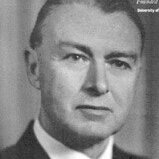
Charles Ralph Boxer
C.R. Boxer (8 March 1904, Isle of Wight-27 Apr. 2000, St. Albans, GB), legendary Far East researcher and scholar, was the chief of British Military Intelligence services in Hong Kong during WWII.
His interest in Dutch and Portuguese maritime expeditions during the XV and XVI centuries led him to the discovery of an unpublished chapter in the monumental chronicle “Decada da Asia”, from Portuguese author Diogo do Couto: the description of Angkor Wat by a Franciscan priest in 1551, one of the oldest and most developed Western documents related to Angkor.
Professor at King’s College, London, granted honorary doctorates in Lisbon, Utrecht and Taiwan, C.R. Boxer was banned from entering Portugal by dictator Salazar after publishing his Race Relations in Portuguese Colonial Empire 1415 – 1825 in 1963. Later on, however, he was granted the highest Portuguese distinction, the Grand Cross of the Order of Infante Dom Henrique.
Boxer has compiled the famous “Boxer Codex”, one of the richest collections of written sources on the Ancient Far East. He is also known for his affair with American journalist Hillary Hahn (1905−1997), whom he married in 1945. A prolific contributor to The New Yorker, Hillary Hahn published some 50 travel and history books, including Raffles of Singapore.
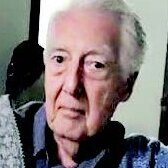
Michael Smithies
Michael Smithies (1932 — 2 Jan. 2019, Bangkok) was a British historian based in Bangkok, a translator of numerous texts on Siam and Cambodia from French into English — in particular studies by French archaeologist Jacques Dumarcay, Michel Jacq-Hergoualc’h and Bernard-Philippe Groslier in modern times -, an author of numerous books on Siamese and Southeast Asian civilizations.
After majoring in Mediaeval Studies and French language at Oxford University — on an ‘open scholarship’ -, Prof. Smithies arrived in Bangkok as an Education Officer for the British Council in 1960. At that time, he became an active member of the Siam Society and a frequent contributor to the Journal of Siam Society (JSS), of which he was twice Honorary Editor (1969 – 71 and 2002-09). He worked with the British Council in Phnom Penh (1964−5) before returning to Bangkok, resuming his research on the history of Kingdom of Siam’s foreign interactions in the 16th-17th centuries, with an emphasis on France. His translation of Zhou Daguan’s Customs of Cambodia (2001) was made from Paul Pelliot’s first edition of the famous 1296 Chinese travelogue to Angkor published in 1902.
From 1971 to 1985, he pursued a roving academic career as lecturer in French at the University of Hong Kong (1971−4), British Council Director of the Staff English Language Training Unit at Gadjah Mada University, Yogyakarta (1974−6), professor of Language and Social Science at the University of Technology in Lae, Papua New Guinea (1976 – 1982), associate professor in communication studies at the new Nanyang Technology University, Singapore (1982 – 5), then back in Bangkok as visiting professor at the Asian Institute of Technology’s English Language Centre, special lecturer at Burapha University, Bang Saen, and adviser to United Nations ESCAP staff training unit from 1987 to 1992, when he retired.
Involved in Bangkok’s cultural scene for decades, Smithies was known for organizing classical music concerts and setting up exhibitions of Thai modern artists, locally and in the UK. He spent his last decades between his vacation house in Coulon (France) and the village of Bua Yai, Isan (Thailand), alongside his companion, Thai artist Uthai Traisiwakul (see Tej Bunnag, ‘Michael Smithies, 1932 – 2019’, JSS 107 – 1, 2019: 173 – 6.) He was made Chevalier de l’Ordre des Arts et des Lettres by the French government in 2006.
Publications
- [with Tej Bunnag] In Memoriam Phya Anuman Rajadhon: Contributions in Memory of the Late President of the Siam Society, Bangkok: Siam Society, 1970.
- Discovering Thailand : guidebook and photographs by Achille Clarac, Bangkok : Siam Communications, 1972. 458 p.
- A Javanese Boyhood : an ethnographic biography, Singapore : Federal Publications, 1982, 145 p. ISBN 9971404214 [with illustrations by Philip Teo and Yuli].
- A Singapore boyhood, Singapore/Kuala Lumpur : Federal Publications, 1984, 114 p. [illustr.]. ISBN 9810190336.
- [tr. and pres.] The Discourses at Versailles of the First Siamese Ambassadors to France 1686 – 7, together with the list of their presents to the Court, Bangkok: Siam Society, 1986.
- The Mons : collected articles from the Journal of the Siam Society, Bangkok: Siam Society, 1986, 82 p. ISBN 9748298019.
- “The Ladies at Versailles on 1st September 1686,” Siam Society Newsletter (SSN) 2 – 2, June 1986.
- Old Bangkok, Singapore : Oxford University Press, 1986, 83 p. [illustr.]. ISBN 0195826868.
- [ed. and tr.] A Week in Siam January 1867, by the Marquis of Beauvoir, Bangkok: 1986, 102 p. ISBN 9748298035.
- Description of Phetchaburi, Bangkok: Siam Society, 1987, 107 p. ISBN 9748298108.
- Yogyakarta : cultural heart of Indonesia, Singapore : Oxford University Press, 1986, 110 p. [illustr.], ISBN 0195826531.
- [tr.] Early accounts of The Siamese embassy to the Sun King : the personal memorials of Kosa Pan, Bangkok : Editions Duang Kamol : Chatchamnai doi Duangkamonsamai, 1990, 141 p. ISBN 9742105057.
- [compil. and intr.] Descriptions of old Siam, Kuala Lumpur/New York : Oxford University Press, 1995, 319 p. ISBN 9676530832.
- [ed.] The Siamese Memoirs of Count Claude de Forbin 1685 – 1688, Chiang Mai: Silkworm Books, 1996.
- [ed. and pres.] A pilgrimage to Angkor by Pierre Loti (Julien Viaud), based on a translation by W.P. Baines, Chiang Mai: Silkworm Books, 1996, 126 p. [with 16 plates by Euayporn Kerdchouay].
- [ed.] The Chevalier de Chaumont and the Abbé de Choisy: Aspects of the Embassy to Siam 1685, Chiang Mai: Silkworm Books, 1997.
- [ed.] A Scottish sea captain in Southeast Asia, 1689 – 1723: Alexander Hamilton, Chiang Mai: Silkworm Books, 1997, 216 p.
- A resounding failure : Martin and the French in Siam, 1672 – 1693, Chiang Mai : Silkworm Books, 1998, 168 p. ISBN 9747100711.
- “Young Beauregard (c.1665 – c.1692) soldier of misfortune in Siam,” Journal of the Royal Asiatic Society (JRAS), 3d series 8 – 2, July 1998: 229 – 235.
- A Siamese embassy lost in Africa 1686 : the odyssey of Ok-Khun Chamnan, Chiang Mai: Silkworm Books, 1999, 134 p. ISBN 9747100959.
- [ed.] The Talaings by Robert Halliday, Bangkok : Orchid Press, 1999, 172 p. ISBN 9748299112.
- Gulfs of Thailand : a collection of short stories, Chiang Mai : Silkworm Books, 1999, 144 p. ISBN 9747100894.
- “Madame Constance’s jewels.” JSS 88, 2000: 111 – 121.
- [tr. and pres.] The Customs of Cambodia by Zhou Daguan, Bangkok: Siam Society, 2001 [4th ed.], 147 p.
- Mission Made Impossible: The Second French Embassy to Siam 1687, Chiang Mai: Silkworm Books, 2000.
- [with Luigi Bressan] Siam and the Vatican in the Seventeenth Century, Bangkok, River Books, 2001.
- [ed.] The Diary of Kosa Pan (Thai Ambassador to France. June-July 1686), translated into English by Visudh Busayakul, introduced and annotated by Dirk Van der Cruysse, Chiang Mai : Silkworm Books, 2002, 82 p. [illustr.]. ISBN 9747551586.
- [tr.] Siam and the West, 1500 – 1700, by Dirk van der Cruysse, Chiang Mai : Silkworm Books, 2002, 583 p. ISBN 9747551578.
- [tr. and pres.] Three military accounts of the 1688 ‘Revolution’ in Siam by General Desfarges, Lieutenant de La Touché and Engineer Jean Vollant des Verquains, Bangkok : Orchid Press, 2002, 192 p. ISBN 9745240052.
- [ed.] Two Yankee Diplomats in 1830s Siam, Edmund Roberts and W.S.W. Ruschenberger, Bangkok : Orchid Press, 2002, 232 p. ISBN 9745240044.
- [tr. and ed.] Marcel Le Blanc: History of Siam in 1688, Chiang Mai: Silkworm Books, 2003.
- ‘Eclipses in Siam, 1685 and 1688, and their representation’, JSS 91, 2003: 189 – 204.
- Village vignettes : portraits of a Thai village, Bangkok : Orchid Press, 2003, 168 p. ISBN 9745240311 [with drawings by Uthai Traisiwakul].
- [tr. and ed.] Witnesses to a Revolution, Siam 1688: twelve key texts describing the events and consequences of the Phetracha coup d’ʹetat, and the withdrawal of French forces from the country, Bangkok: Siam Society, 2004, 220 p. ISBN 9748298558.
- [tr.] Architecture and its models in South-East Asia, by Jacques Dumarcay, Bangkok : Orchid Press, 2003, 127 p. ISBN 9745240273.
- [tr.] Muslims of Thailand, by Michel Gilquin, Chiang Mai : Silkworm Books, 2005, 223 p [illustr.]. ISBN 9749575857.
- [tr. and pres.] Angkor and Cambodia in the sixteenth century : according to Portugese and Spanish sources by B.-P. Groslier, Bangkok : Orchid Press, 2005, 196 p. ISBN 9745240532.
- [tr., preface by Jean Boisselier] The armies of Angkor : military structure and weaponry of the Khmers, by Michel Jacq-Hergoualc’h, Bangkok, Thailand : Orchid Press, 2007, 191 p [illustr.]. ISBN 9789745240964. [1st English tr.]
- ‘The Chevalier de Fretteville (c.1665 – 1688), an Innocent in Siam’, JSS 101, 2013: 113 – 25.
- [ed.] 500 Years of Thai-Portuguese Relations, Bangkok: Siam Society and Ministry of Foreign Affairs, 2011.
- [ed. on his 80th birthday] Seventeenth century Siamese explorations; a collection of reprinted articles, Bangkok: Siam Society, 2012, 390 p.

